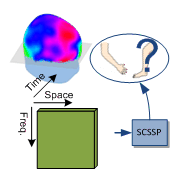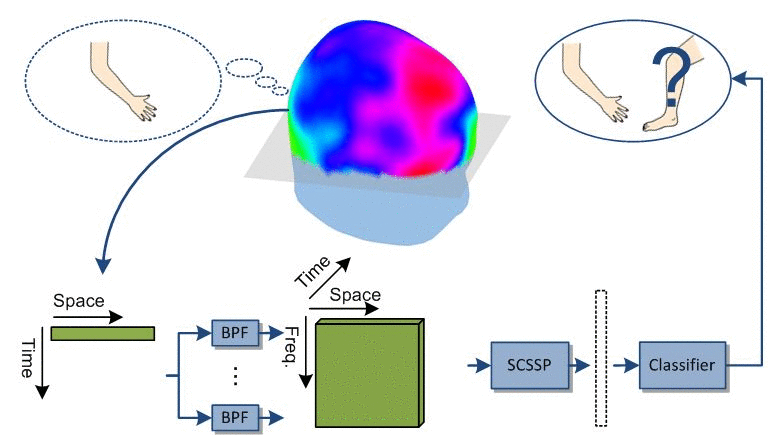Amirhossein S. Aghaei, Mohammad Shahin Mahanta, Konstantinos N. Plataniotis, University of Toronto
Brain-Computer Interface (BCI) systems aim to provide a non-muscular channel for the brain to control external devices using electrical activities of the brain. These BCIs can be used in various applications, such as controlling a wheelchair or neuroprosthesis for disabled individuals, navigation in virtual environment, and assisting healthy individuals in performing highly demanding tasks or controlling devices. Motor-imagery BCI systems in particular are based on decoding imagination of motor tasks, e.g., to control the movement of a wheelchair or a mouse curser on the computer screen and move it to the right or left directions by imagining right/left hand movement. In the past decade, there has been a growing interest in utilization of electroencephalogram (EEG) signals for non-invasive motor-imagery BCI systems, due to their low cost, ease of use, and widespread availability.
During motor-imagery tasks, multichannel EEG signals exhibit task-specific features in both spatial domain and spectral (or frequency) domain. This paper proposes a novel approach for extraction of discriminant spatio-spectral EEG features in Motor-imagery BCIs, which uses heteroscedastic matrix-variate Gaussian model for multiband EEG rhythms. In the proposed approach, EEG is first passed through a bank of bandpass filters to extract different bands of EEG rhythms. The resulting signal is then passed through a joint spatio-spectral feature extractor, called separable common spatio-spectral patterns (SCSSP), which directly operates on matrix-variate data.
SCSSP method jointly processes the data in both spectral and spatial domains, and hence can sort the extracted features across both domains. As a result, SCSSP does not require a separate subsequent dimensionality reduction stage, and its output can directly be passed to the classifier. Furthermore, SCSSP has relatively lower computational cost compared to similar algorithms such as filterbank-CSP. Proposed approach is particularly suitable for applications in which the computational power is limited, such as emerging wearable BCI systems.
Keywords: Brain computer interface, common spatial patterns, matrix-variate Gaussian, separability, spatio-spectral features


